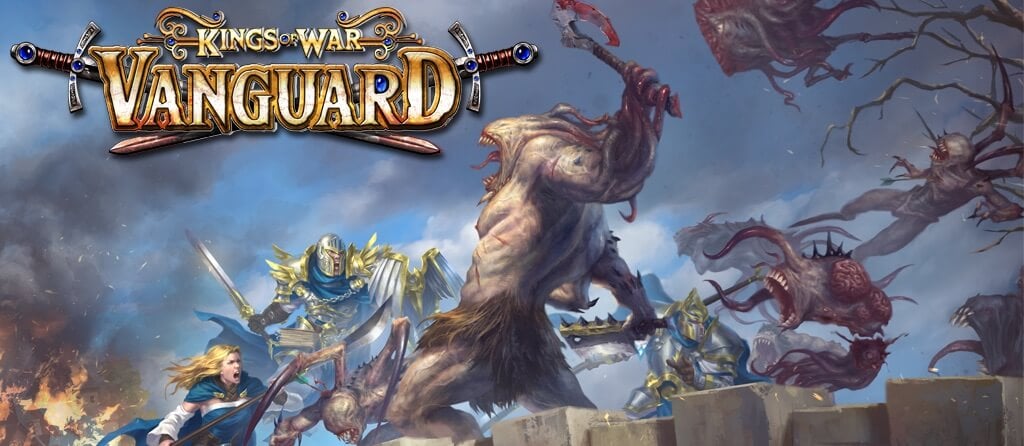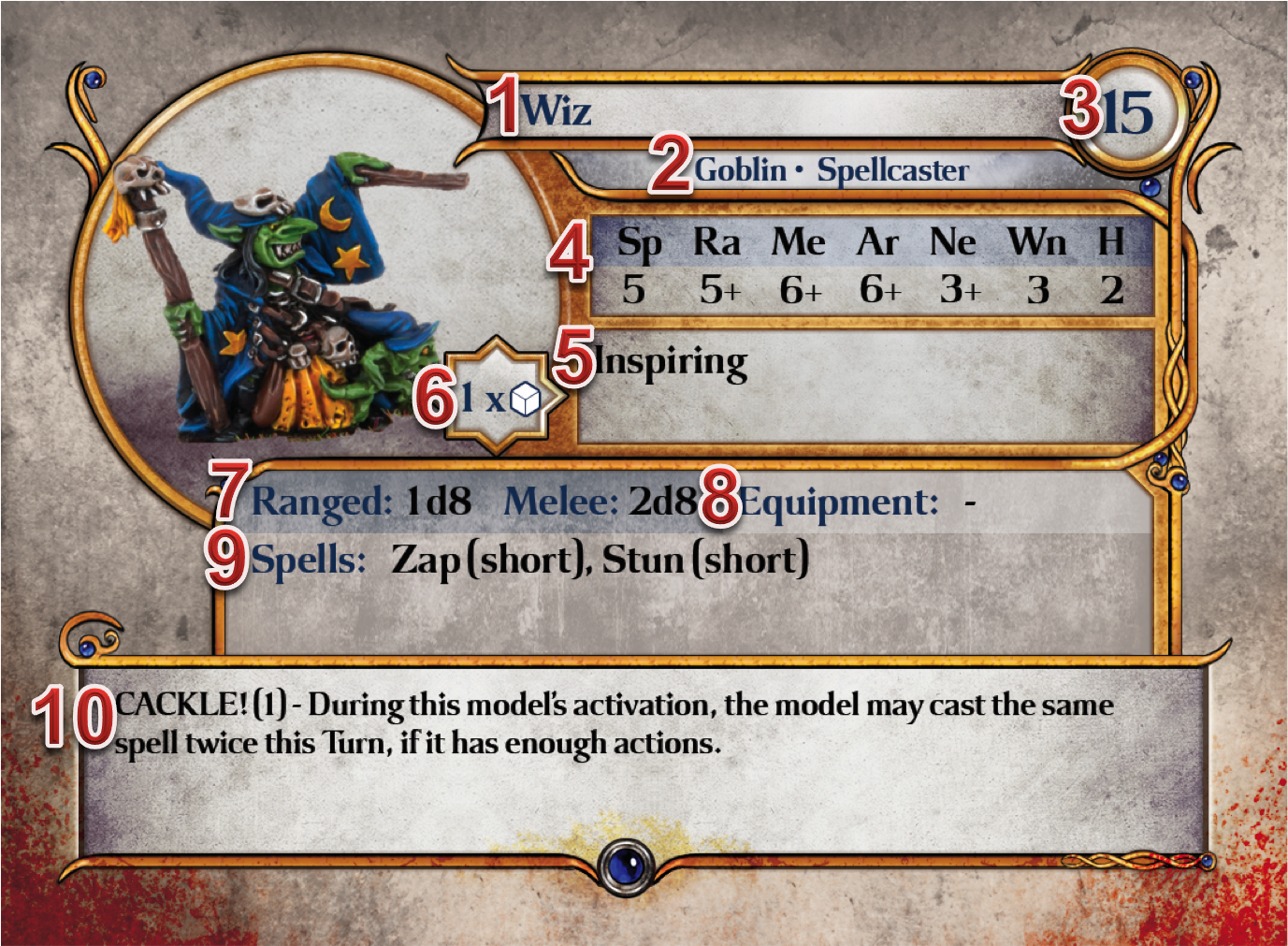Kings of War: Vanguard – Character Cards
17th Oct 2017
Rob Burman
Kings of War: Vanguard will be launching on Kickstarter soon. Throughout this week, we’ll be exploring the game in more detail and giving you a taste of the rules. In today’s blog, we’re looking at an example of a character card.

A little like The Walking Dead: All Out War, Vanguard will feature character cards that include all the stats you'll need to play. Each of the heroes, special characters and warriors will come with their own cards, giving players a great reference during the game. When you're playing a campaign, we'll also be making a roster sheet, so you can track upgrades/new abilities/xp.
In today's blog, we're going to breakdown an example card to explain all the various elements, which will also give you a brief insight into some of the key mechanics of Vanguard. So, without further ado, let's crack on...

- NAME - if they're a named character, this will be their name, e.g. Grekle Cacklemaster, or if they're a standard miniature it'll be the name of the unit.
- RACE/TYPE - first up you can see what Race the model is. The model's Race is also a keyword that may interact with other rules, e.g. a unit could receive a bonus when attacking a Race they particularly despise. Next, models will be one (or more) of the following Types: Grunt, Warrior, Support, Command, Spellcaster, and Large. Type is important when building a Warband and, once again, the Type is a keyword that may interact with other rules.
- POINTS - this is how many points it costs to add the model to your warband.
- STATS - this is where you can find all the stats for the model.
Speed (SP)
This value shows the distance the model can move in inches.
Ranged (Ra)
This is the target number the model needs to roll to hit a target when using a Ranged attack, typically as part of a Shoot or Cast action.
Melee (Me)
This is the target number the model needs to roll to hit an opponent when making a Melee attack.
Armour (Ar)
This is the target number a model needs to roll to avoid taking damage and suffering wounds.
Nerve (Ne)
This is the target number for any Nerve tests the model needs to take. This will come into play if the Warband is broken or if something unnerving happens.
Wounds (Wn)
This shows the number of wounds the model can suffer before it is removed from play as a casualty. The larger the number, the more resilient (or stupid!) the model is.
Height (H)
The height of a model affects how it interacts with other models and terrain for line of sight and visibility of targets.
5. SPECIAL RULES - here you can see any special rules the model has. Some of these will be similar to those seen in Kings of War, while others will be completely new.
6. POWER DICE - this indicates how many Power Dice the model generates. The Power Dice work a little like the Command Dice in Deadzone and we'll have a closer look at Power Dice in a future blog.
7. RANGED & MELEE - this shows how many D8s the model rolls during combat. That's right, we'll be using D8s for Vanguard, rather than standard D6s. Even better we've got exploding D8s during combat to help create some crazy cinematic moments.
8. EQUIPMENT - equipment will play a large part in Vanguard, as warbands uncover and buy new items during a campaign. Some models will come equipped with weapons/items as standard and they'll be listed here.
9. SPELLS - spellcasters will have their spells listed here. We'll be expanding the number of spells available, compared to Kings of War. Also, you may notice it says (short) after the spell name. Just like Deadzone, models will be able to perform two short actions or one long action. Some spells will be long actions, while others will be short. What's more you'll be able to boost spells to make them more powerful. As spellcasters gain experience in a campaign, they will also get the chance to learn new spells from an advanced spellbook or faction-specific magic.
10. SPECIAL ABILITIES and RULES - if the model has any special abilities they'll be listed here. Special Abilities use the Power Dice mentioned earlier, so we'll go into specifics in a future blog.



